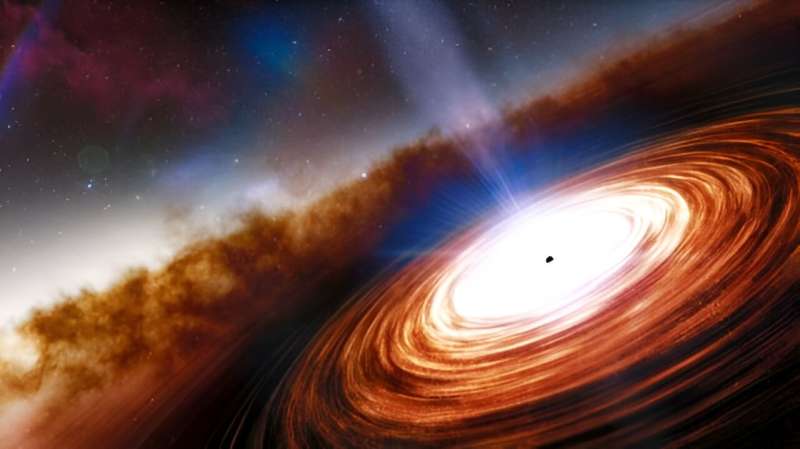
The universe’s very first stars had an important job. They formed from the primordial elements created by the Big Bang, so they contained no metals. It was up to them to synthesize the first metals and spread them out into the nearby universe.
The JWST has made some progress in finding the universe’s earliest galaxies. Can it have the same success when searching for the first stars?
Finding the universe’s first galaxies is an extremely difficult task and one of the main motivations behind building the JWST. Light from these ancient objects is red-shifted into the infrared, which the JWST excels at sensing. By performing deep-field observations in the infrared, the space telescope has located some of the earliest galaxies.
But the first stars are more ancient than the first galaxies. The first stars formed roughly 50 to 100 million years after the Big Bang, and their light brought an eventual end to the universe’s Dark Ages. Astrophysicists think that these stars were extremely large, with up to 1,000 solar masses.
The new study is titled “The detection and characterization of highly magnified stars with JWST: Prospects of finding Population III.” It’ll be published in the Monthly Notices of the Royal Astronomical Society and is currently available on the arXiv preprint server. The lead author is Erik Zackrisson from the Department of Physics and Astronomy, Uppsala University, Sweden.
“Due to the lack of efficient coolants and fragmentation in the chemically unenriched gas at these early epochs, the resulting metal-free (aka Population III) stars are believed to be characterized by extremely high masses (characteristic masses ~ 10–1000 solar masses),” the authors write.
To see these early, massive stars, the JWST will need some help from gravitational lensing. “Gravitational lensing may render individual high-mass stars detectable out to cosmological distances, and several extremely magnified stars have in recent years been detected out to redshifts z ~ 6,” the authors explain. At z ~ 6, the light has taken over 12.7 billion light-years to reach us.
Gravitational lensing takes advantage of situations where a massive foreground object, like a galaxy cluster, is between us and an object we want to observe. As the light from the target passes by the foreground object—called a gravitational lens—the light is magnified. That makes the otherwise invisible object visible.
The first stars are at about z=20 in terms of redshift, and the JWST should be able to see that light if it can make use of gravitational lensing. If it can, then the powerful telescope will start to give us observational evidence for a period of time in the early universe that so far we understand mostly through theory: the Epoch of Reionization (EoR).
During the EoR, the universe was dominated by a dense, obscuring fog of hydrogen gas. When the first stars formed, their ultraviolet light reionized the gas, allowing light to travel. This is a critical step in the life of the universe, so finding some of the ancient Pop III stars that were responsible is an important goal.
These first stars are compelling in other ways, too, and they shaped our universe. They were massive, millions of times brighter than the sun, and lived for a short time compared to a star like our sun. They either exploded as supernovae or collapsed into black holes. The ones that became black holes swallowed gas and other stars and became the universe’s first quasars. Astrophysicists think that these quasars grew through accretion and mergers to become the supermassive black holes that anchor the centers of galaxies like our Milky Way.
The ones that exploded as supernovae also played an important role. They forged the elements heavier than hydrogen and helium, then spread those metals back out into space when they exploded. The stars that came later contained some of these metals, and the metals also formed rocky bodies. Prior to Population III supernovae, there were no rocky planets and certainly no possibility of life. So these massive, ancient stars, whether they ended as supernovae or black holes, helped set the stage for the universe we see around us today.
If the JWST is successful, there won’t be any pretty pictures of these stellar ancestors. Instead, there will be data. Untangling that data and determining if there are Pop III stars in it is a complex task. This effort pushes the space telescope and the scientists working with it to their limits.
For one thing, it’s difficult to determine metal-enriched stars from metal-poor Pop III stars spectroscopically. One reason is that most of these massive stars are likely in binary pairs, and that complicates the light signal. Another reason is that if the stars are still relatively young, they can be surrounded by nebulous hydrogen, and that also makes the light signals difficult to interpret.
If the JWST can find some of these stars, then the ground-breaking telescope—already an astounding success—is even more successful. It, and the people that operate it, are methodically ticking off the boxes on its list of scientific objectives.
More information:
Erik Zackrisson et al, The detection and characterization of highly magnified stars with JWST: Prospects of finding Population III, arXiv (2023). DOI: 10.48550/arxiv.2312.09289
Citation:
Can Webb find the first stars in the universe? (2023, December 20)
retrieved 20 December 2023
from https://phys.org/news/2023-12-webb-stars-universe.html
This document is subject to copyright. Apart from any fair dealing for the purpose of private study or research, no
part may be reproduced without the written permission. The content is provided for information purposes only.

